a web page by Don Roberson |
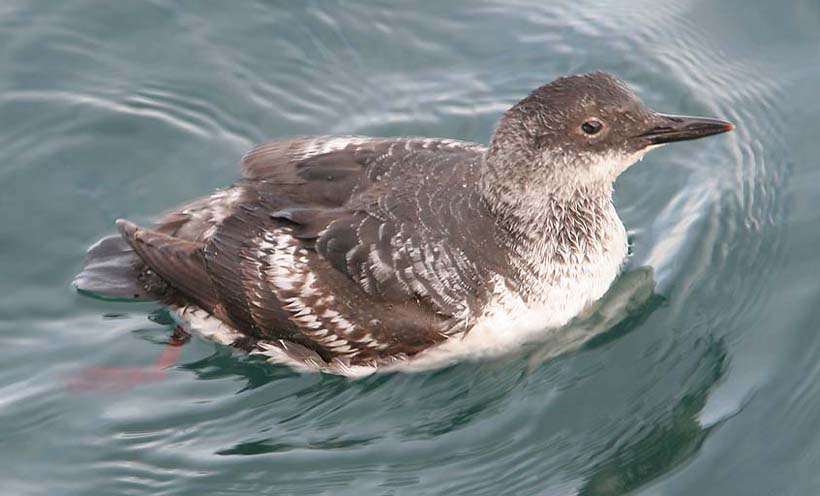 |
The adults will be arriving sometimes this month to nest under this pier, and other structures in the harbor and along Cannery Row, and they will arrive in full breeding (alternate) plumage. These winter birds are something of a mystery. A few are on every Monterey Peninsula CBC, but numbers are always small. Are they some of the young that hatched here the previous summer? There doesn't seem to be enough of them for all the young fledged each year. Or are they from a population that nests somewhere else? If so, from where? Pigeon Guillemots differ in this plumage from Black Guillemot, a northern and eastern species never recorded in California, but dark rather than white underwings. But note the flash of the white at the base of the primaries from below — this individual has what Pyle (2008) calls "maximum white" in the underwings of Pigeon Guillemot. |
||
I've lost track of the
number of times someone has reported a "Marbled Murrelet" inside Moss
Landing harbor in the fall, and which later turned out to be a Pigeon
Guillemot. From this view (left), you can see what looks like a motley
patterned alcid above, white below, with white in the wing, but not the
big white wing-panel of adult guillemots. Many folks match this pattern
to their field guide pictures of Marbled Murrelet (possibly they think
it is in an autumn molt from summer to winter plumage). But look more
carefully! For reference, I show a summer Marbled Murrelet (below left) and a winter Marbled Murrelet (below right). We'll stipulate that the MAMU photos aren't great shots; they are scanned from slides: below left 8 Aug 1993 Tracy Arm, Alaska; below right 22 Sep 1982 Monterey Bay |
||
|
||
Marbled Murrelet is also an absolute tiny bird, not nearly the size of a guillemot. Further, the white "on the wing" is actually on scapulars (with a small white patch on the secondaries), and not on the coverts at all. Also, the legs and feet of Marbled Murrelet are tiny and are black (right; 27 Jan 2009 Monterey Harbor). Other differences can be found by comparing the photos on this page. My February 2009 guillemot was actively diving for fish at the edge of the wharf, and I like the fact that it opened its wings just as it dove; presumably it uses those to 'fly' underwater. And Pigeon Guillemot at any age has big red-orange feet. |
||
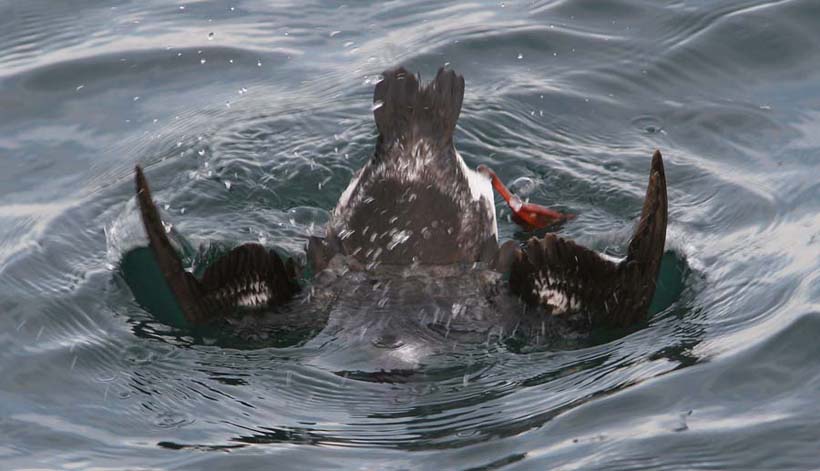 |
||
Photos: All photos © Don Roberson, all rights reserved. Literature cited:
|
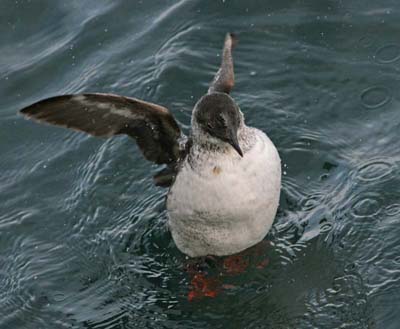 On
my way home from work on 4 Feb 2009, I stopped at the end of Wharf #2
in Monterey harbor, and this alcid was diving next to the pier. It is a
first-cycle Pigeon Guillemot. The extensive
brown-tipping to the median coverts (which forms essentially a white
row of dots on dark brown wings), the mottling to head, neck, and sides
of breast; and details of remix and rectrix wear apparently age this as
a bird in its first winter (Pyle 2008).
On
my way home from work on 4 Feb 2009, I stopped at the end of Wharf #2
in Monterey harbor, and this alcid was diving next to the pier. It is a
first-cycle Pigeon Guillemot. The extensive
brown-tipping to the median coverts (which forms essentially a white
row of dots on dark brown wings), the mottling to head, neck, and sides
of breast; and details of remix and rectrix wear apparently age this as
a bird in its first winter (Pyle 2008). 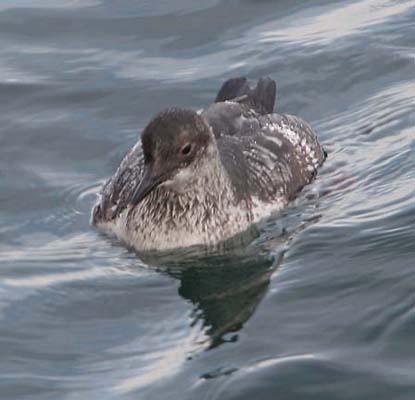 Surprisingly,
this plumage causes identification problems almost every year. It has
the same look as juvenal plumage in Sep-Oct, except that there has been
a little preformative body molt. The remiges and rectrices are still
the juvenal wings and tail.
Surprisingly,
this plumage causes identification problems almost every year. It has
the same look as juvenal plumage in Sep-Oct, except that there has been
a little preformative body molt. The remiges and rectrices are still
the juvenal wings and tail.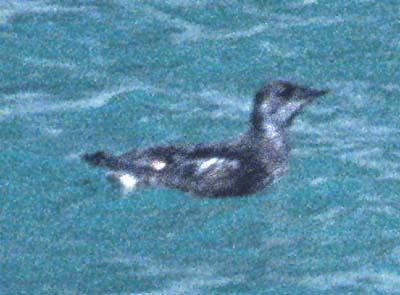
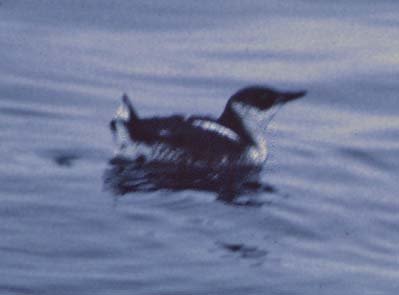
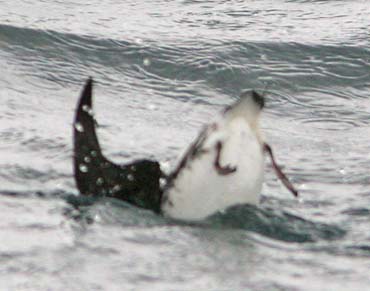 Note
how short and tiny the bills are in Marbled Murrelet [the feathering at the base of the bill on the adult
bird makes it look even shorter] compared to the impressive bill of Pigeon Guillemot.
Note
how short and tiny the bills are in Marbled Murrelet [the feathering at the base of the bill on the adult
bird makes it look even shorter] compared to the impressive bill of Pigeon Guillemot.